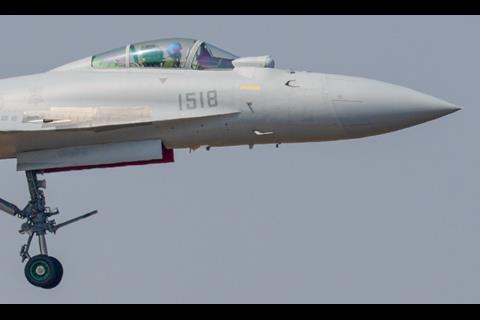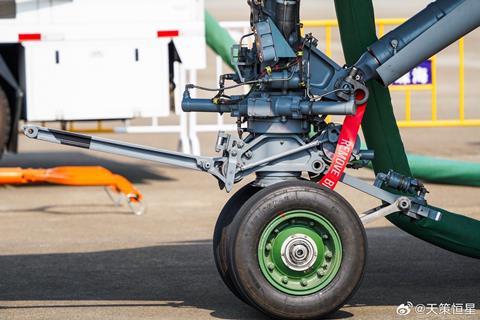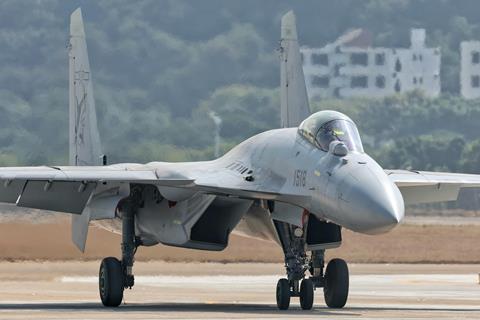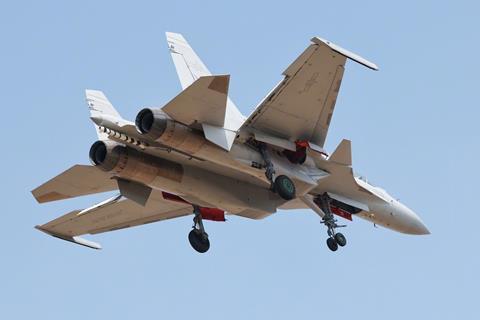The Zhuhai air show has yet to start, but it is already offering some insights into Chinese airpower developments.
In recent days Chinese social media users have posted hundreds of images from Zhuhai airport, where preparations are underway for the show, which kicks off on 12 November.
One aircraft that has made its debut is the Shenyang J-15T, which is designed to operate from the country’s new aircraft carrier, CNS Fujian. Unlike China’s two short take-off barrier arrested recovery (STOBAR) carriers, CNS Liaoning and CNS Shandong, which use a ski-jump to launch aircraft, Fujian is equipped with an electromagnetic aircraft launch system (EMALS).
Aircraft operating from conventional CATOBAR ships can take off with considerably heavier payloads than those operating from STOBAR ships.
Unlike previous versions of the J-15 – which is based on the Sukhoi Su-33 – the J-15T is equipped with a catapult launch bar for connection to the EMALS system.
The configuration of the aircraft’s thrust nozzles suggest that is powered by Shenyang WS-10 engines, and not Saturn AL-31s. The WS-10 is already in use on J-15s that operate from China’s two STOBAR ships, but its presence in the J-15T further underlines China’s confidence in the engine.
Other updates on the J-15T include a canted radome suggesting that the fighter may be equipped with an active electronically scanned array radar. The aircraft also appears to have a new head-up display.
China’s defence ministry has also posted more information about the J-35A, which has also made its debut at this year’s show. In a statement, it quoted company official Wang Yongqing as saying that the aircraft is part of a family for use by both the People’s Liberation Army Air Force (PLAAF) and People’s Liberation Army Navy (PLAN).
It is well known that a naval version of the J-35 is in testing for PLAN use aboard Fujian, but Wang’s remarks suggest that the land-based J-35A may also enter service with the PLAAF.
Zhuhai is famous for its plethora of unmanned air vehicles (UAVs). At this year’s show AVIC is displaying the new “Nine Sky”, a large UAV that has both strike and surveillance roles.
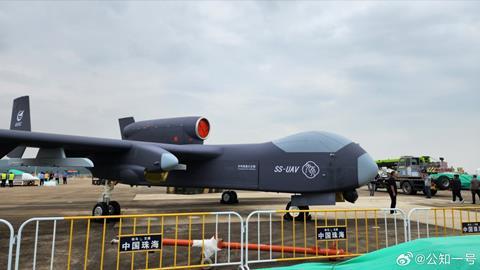
The aircraft, which may be a mock-up, is powered by a single turbojet housed above the fuselage. A forked tail keeps the UAV’s twin rudders well clear of the jet exhaust.
The giant UAV features eight underwing hardpoints. Panels on its fuselage suggest that it is also equipped with payload bays for mission systems.
The UAV’s stage of development is not clear, but Chinese UAVs tend to feature greater weapons loads than western counterparts.





















